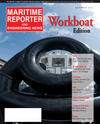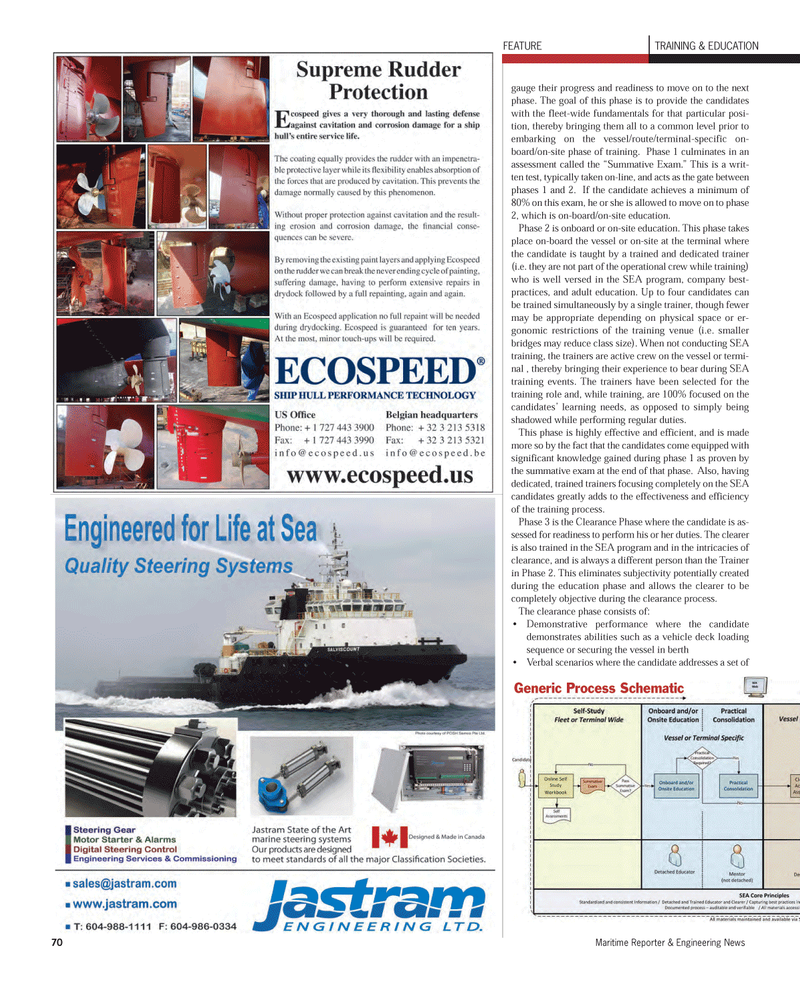
Page 70: of Maritime Reporter Magazine (November 2011)
Feature: Workboat Annual
Read this page in Pdf, Flash or Html5 edition of November 2011 Maritime Reporter Magazine
70Maritime Reporter & Engineering News gauge their progress and readiness to move on to the next phase. The goal of this phase is to provide the candidates with the fleet-wide fundamentals for that particular posi-tion, thereby bringing them all to a common level prior to embarking on the vessel/route/terminal-specific on- board/on-site phase of training. Phase 1 culminates in anassessment called the ?Summative Exam.? This is a writ- ten test, typically taken on-line, and acts as the gate between phases 1 and 2. If the candidate achieves a minimum of 80% on this exam, he or she is allowed to move on to phase 2, which is on-board/on-site education.Phase 2 is onboard or on-site education. This phase takes place on-board the vessel or on-site at the terminal where the candidate is taught by a trained and dedicated trainer(i.e. they are not part of the operational crew while training) who is well versed in the SEA program, company best- practices, and adult education. Up to four candidates canbe trained simultaneously by a single trainer, though fewer may be appropriate depending on physical space or er- gonomic restrictions of the training venue (i.e. smaller bridges may reduce class size). When not conducting SEA training, the trainers are active crew on the vessel or termi- nal , thereby bringing their experience to bear during SEA training events. The trainers have been selected for the training role and, while training, are 100% focused on thecandidates? learning needs, as opposed to simply being shadowed while performing regular duties. This phase is highly effective and efficient, and is made more so by the fact that the candidates come equipped with significant knowledge gained during phase 1 as proven by the summative exam at the end of that phase. Also, having dedicated, trained trainers focusing completely on the SEAcandidates greatly adds to the effectiveness and efficiency of the training process.Phase 3 is the Clearance Phase where the candidate is as-sessed for readiness to perform his or her duties. The clearer is also trained in the SEA program and in the intricacies ofclearance, and is always a different person than the Trainer in Phase 2. This eliminates subjectivity potentially created during the education phase and allows the clearer to be completely objective during the clearance process. The clearance phase consists of:Demonstrative performance where the candidate demonstrates abilities such as a vehicle deck loading sequence or securing the vessel in berth Verbal scenarios where the candidate addresses a set of FEATURE TRAINING & EDUCATION Generic Process Schematic MR Nov.11 # 9 (65-73):MR Template 11/2/2011 3:25 PM Page 70

 69
69

 71
71
